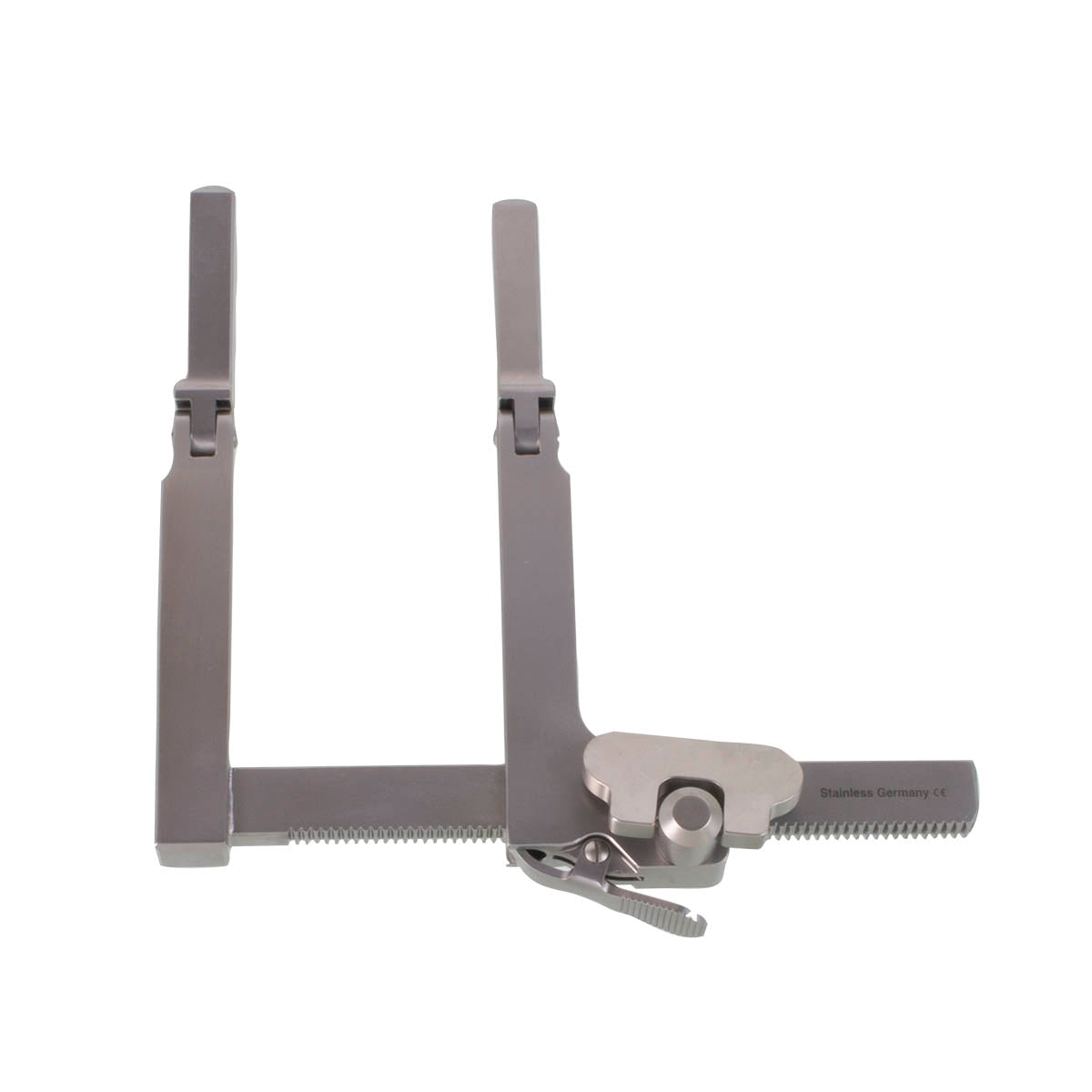
Anteater II Retractor Frame - A Revolutionary Approach to Surgical Exposure
In the tangled world of orthopedic and spinal surgery, precision exposure is vital to ensure the safety, accuracy, and success of procedures. In the arsenal of advanced instruments that aid modern surgeons with their surgical procedures, the Anteater II Retractor Frame is among the most advanced. Anteater II Retractor Frame is notable for its durability, stability, and user-friendliness. It is designed to give the best visual and accessibility during difficult surgery on the spine; this retractor frame represents a new approach to the management of soft tissues and efficiency during surgery.
If used in open or minimally invasive procedures or open procedures, or open procedures, the Anteater II Retractor Frame is designed to be flexible to the surgeon's demands, decreasing fatigue, minimizing trauma to the tissue, and enhancing the patient's outcomes.
What Is the Anteater II Retractor Frame?
It is the Anteater II Retractor Frame is a modular retractor that can be adjusted specially designed for spinal procedures, particularly ones that affect the lumbar or the thoracic region. It is a robust yet flexible frame design with numerous connections for retractor blades as well as arms, which allows adjustable access to a variety of techniques for surgery.
Contrary to the traditional fixed retraction system, the Anteater II offers greater accuracy and control and allows surgeons to adjust the depth as well as angle, and tension in real time during surgery.
Key Features of the Anteater II Retractor Frame
1. Modular Design
Anteater II is an Anteater II system that includes a collection of interchangeable parts, including blades, flexible arms, arms, and clamps that can be arranged according to surgical requirements. Modularity improves flexibility and makes it easier to use.
2. Self-Retaining Mechanism
Once the retractor is in place, the frame will lock into place, maintaining tension and securing soft tissues apart without the need for an assistant surgeon to hold the retractor frame manually.
3. Radiolucent Construction
A lot of Anteater II frames are made with radiolucent substances , which allows for intraoperative fluoroscopy and imaging without having to remove the device.
4. Lightweight and Ergonomic
Despite its sturdy structure, the system has been made to be light and compact that reduces the possibility of interference within the surgical area and enabling easy handling.
5. Versatile Blade Options
The frame is equipped with a variety of retractor blades- sharp or dull and and fenestrated--to meet the various types of tissues and requirements for exposure.
Applications in Surgery
Anteater II Retractor Frame is widely used in: Anteater II Retractor Frame is extensively employed in:
- Spinal Fusion (PLIF, TLIF)
- Discectomies
- Decompression Procedures
- Scoliosis Correction
- Vertebral Fixations and Laminectomies
It is especially favored, particularly in less utilized invasive spinal (MIS) approaches, where optimum exposure using tiny incisions is crucial.
Benefits of Using the Anteater II Retractor Frame
Improved Visualization
The precise and reliable tissue retraction ensures a clear, unobstructed view of your surgical area.
Enhanced Surgical Control
Surgeons are able to adjust the blade's position and frame angle throughout the procedure, ensuring optimal exposure.
Reduced Surgeon Fatigue
In removing the requirement to retract manually, Anteater II frees the surgical team to concentrate on the job at the moment.
Minimal Tissue Trauma
Blade positioning that can be customized allows for soft and precise retractions to maintain the integrity of tissue and lessen postoperative discomfort.
Faster Procedures
Effective set-up and optimal exposure lead to shorter operating times and a shorter time for anesthesia.
Maintenance and Sterilization
To ensure the long-term durability and efficiency of the Anteater II Retractor Frame:
- Cleanse the components thoroughly after every use to get rid of biological debris.
- Disassemble modular parts for detailed cleaning.
- Utilize sterilization methods that are compatible with autoclaves (consult the manufacturer's instructions).
- Now and then, check the edges of blades as well as tension locks and joints to ensure that they are not damaged or worn out.
- Keep the instruments in the cushioned tray for surgical instruments to protect them from the risk of damage during storage or transport.
What to Consider When Purchasing
- Compatible with existing retractors or other accessories
- The type of procedure that is performed the most often
- Blade types and sizes range.
- Radiolucency and material quality
- Easy assembly and adjustment
Find systems that comply with ISO or CE standards and are supported by dependable technical support and customer service.
Conclusion
Anteater II Retractor Frame Anteater II Retractor Frame is a tribute to the ever-changing needs of modern surgery. It combines the ability to adapt as well as precision and comfort for the surgeon in a small and compact unit. Its ability to provide an adjustable, stable retraction can be a great asset in orthopedic and spinal surgeries, especially in minimally invasive techniques. With proper maintenance and handling, it is expected that Anteater II will continue to be a valuable tool for surgeons. Anteater II will continue to improve surgical efficiency and the outcomes of patients in every operating room.


 For Bulk Order Whatsapp US
For Bulk Order Whatsapp US